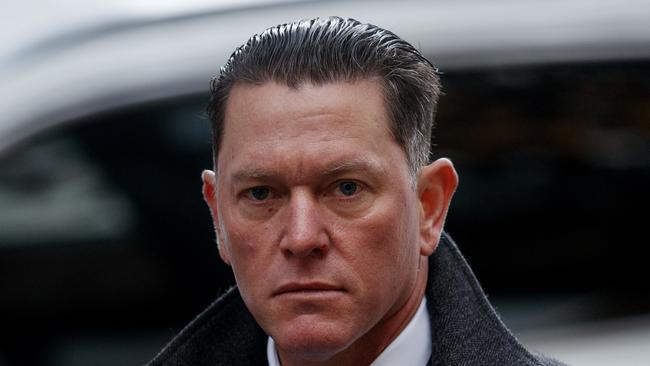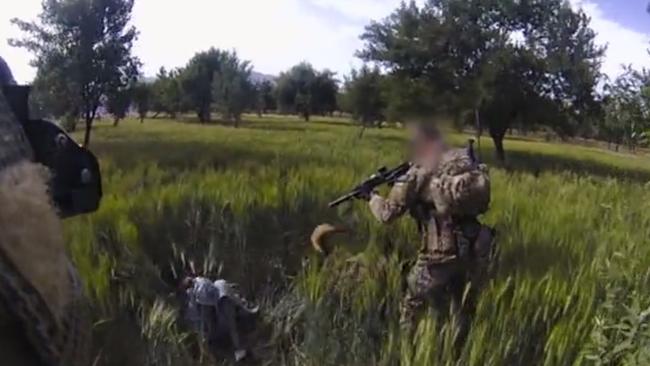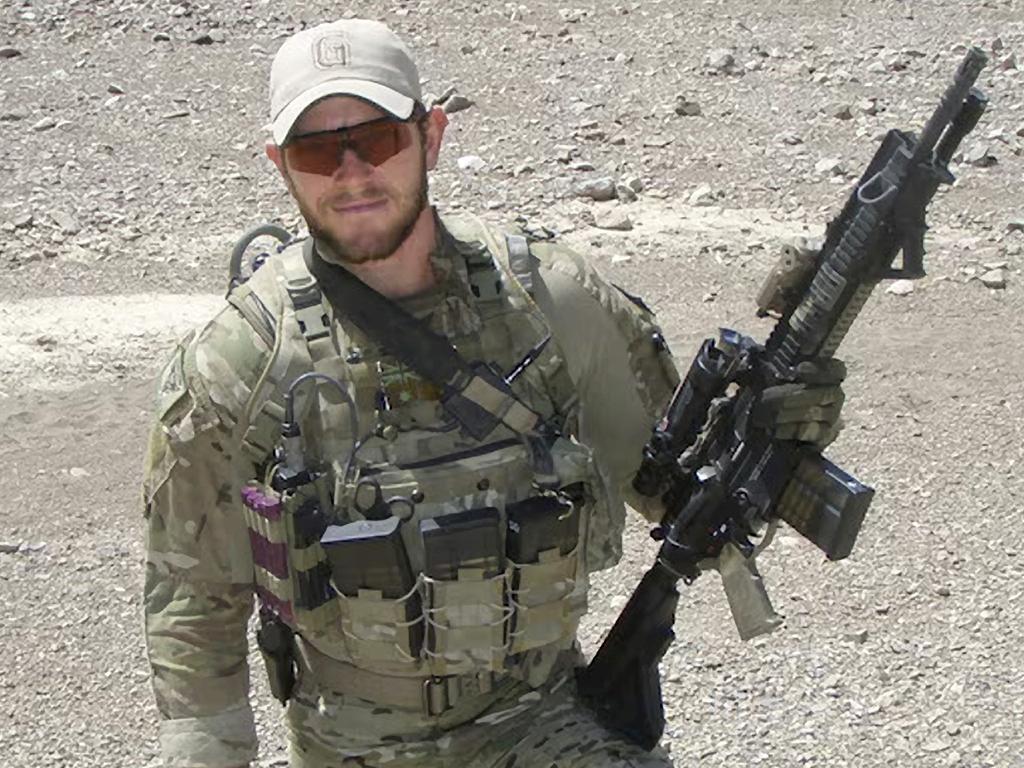13 years later, special forces soldiers give evidence about an alleged war crime
In a local courtroom in Sydney, two former special forces members watched footage of their ex-colleague Oliver Schulz shoot an Afghan man – 13 years after they witnessed it.

In a local courtroom in Sydney, two former special forces members watched footage of their former colleague Oliver Schulz shoot a local Afghan man – 13 years after they witnessed it unfold in a village wheat field in Afghanistan.
SAS regiment trooper Mr Schulz sat at the front of the courtroom for multiple days as the now infamous helmet-cam footage, which depicts him allegedly firing three shots at close-range at unarmed man Dad Mohammad, was played multiple times, stopped and started, and picked apart by prosecutors.
Mr Schulz is charged with Mohammad’s murder, the first time an Australian soldier or veteran has been prosecuted in a criminal court for a war crime.
As the 11-day committal hearing ended on Monday, Ben Roberts-Smith had just lost a bid to overturn the civil finding that he committed war crimes in Afghanistan, but vowed to challenge the verdict in the High Court.
The scenes at the Downing Centre Local Court were as novel as the charge, with two courtrooms kept side-by-side so that parties could move freely between an open court and a closed court. About 20 commonwealth solicitors and barristers sat in the pews, and a senior counsel for the Australian government would quickly interject when witnesses unwittingly dipped into evidence that could compromise national security.

These six witnesses – most of whom were in the same rotation or were on the ground on May 28, 2012 – had all declined to speak to prosecutors who were putting together the case against Mr Schulz.
Much of their evidence was given in closed court, indicating the level of complexity of hosting a potential future trial, which could take three to six months.
The matter has now been adjourned to July 15 when it is expected to be committed for trial.
An extended version of the dog handler’s helmet-cam footage, which was first aired publicly on the ABC’s Four Corners in 2020, shows the troop on a Black Hawk helicopter before it lands, and the soldiers run about 50m across a wheat field.
The purpose of the mission was to kill or capture “Objective Young Akira”, the court heard repeatedly. The troop enters some farmland, lined with aqueducts, and moves along a compound of interest. Mr Schulz points to some Black Hawks and says “FAMs (fighting-age males) over there”.

The dog handler and Mr Schulz move towards an open field and come across Mohammad, who is trying to fight off the dog who ran ahead. Mr Schulz points his gun at Mohammad as the dog is called back, and Mohammad ends up on his back.
Mr Schulz looks around and asks three times variations of whether he should “drop this c..t” before firing three shots at Mohammad.
In the courtroom, the ex-soldiers are asked to identify hardly visible figures in the footage who the prosecution have circled in yellow, asked what their hand gestures meant, what communications they remembered hearing, and what they saw in relation to Mohammad.
A third person identified in the footage – the patrol commander – was shot dead in an engagement with insurgents during the last mission of that rotation.
While the footage is at the centre of the prosecution case, whether it paints the full picture will likely be a point of contention at trial. One of the ex-soldiers, who was metres from Mr Schulz as he fired the shots, conceded the unarmed Mohammad was “under control” and not a threat to Mr Schulz. “From my memory, no. From where I stood, no,” he told the court.
The soldier was asked whether he had seen anything in Mohammad’s hands when they first came across him in the field. “Not from memory, no,” he responded. “I took it that he didn’t have a weapon in his hands because he had his hands up.”
The other ex-soldier, who was ducked down in tall grass metres behind Mr Schulz, remembered hardly anything about that day, and appeared to piece together his actions, when asked, from the footage.
It appeared his view of Mr Schulz, as he fired the shots, may have been obstructed slightly.
It was pointed out to him that as Mr Schulz called out about whether he should “drop this c..t”, he had turned his head and body towards a senior troop member 10m to 20m away and made a hand gesture or signal. He told the court he thought he was pointing over his shoulder to indicate “they were calling for him”.
In open court, the men were also asked about what briefings they were given ahead of the mission, the debrief afterwards, and whether they spoke about that day to anyone.
Others, who were on the ground but not in that troop, were asked whether they heard of anyone planting objects on Mohammad’s body. “No,” was the answer.
Mr Schulz has not yet entered a plea.




